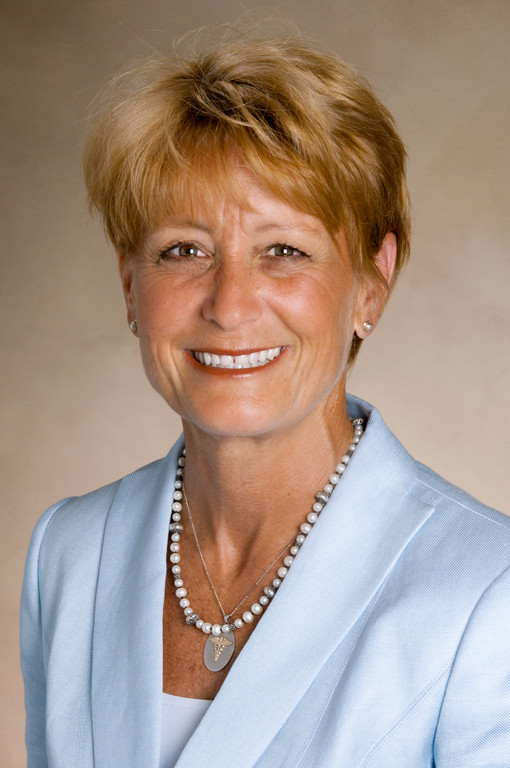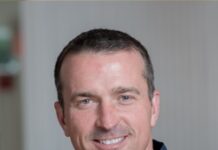
Dr. Kim Chapin, the director of Microbiology and Infectious Disease Molecular Diagnostics at Lifespan’s Rhode Island Hospital, runs a very busy laboratory. She directs about 57 clinical laboratory professionals, conducting about 1,400 tests per day, every day. Her laboratory serves the four hospitals within the Lifespan system as well as more than 40 group practices in Rhode Island and Massachusetts.
Career opportunities in the clinical laboratory scientist arena is the fastest-growing job need listed in labor statistics, but, as Chapin explains, its also an extremely competitive field, with limited openings currently in Rhode Island.
Providence Business News asked Chapin to talk about some of the technology changes now underway within the medical laboratory sector.
PBN: At the American Society for Microbiology conference in San Francisco in June, you will be speaking on the topic, “In the year 2025: Survival Strategies and Clinical Microbiology’s leadership role in tomorrow’s health care teams.” Can you give us a preview of what you’ll be talking on?
CHAPIN: My component of the seminar at the ASM meeting in San Francisco will specifically be suggesting solutions and implementation strategies to address the current workforce shortages we are experiencing in the field of clinical laboratory scientists (technologists) and why it is critical to address this issue so that we can continue to reliably staff our clinical laboratories and assure patient safety and quality for laboratory test results.
Health care providers use laboratory tests to help clarify the medical diagnosis for more than 70 percent of their patients, and clinical laboratory scientists are behind the scenes performing this service.
However, for every seven technologists leaving the profession, currently only two are filling their space, at a time when technological advances are surging. Health care will need to implement viable strategies to address this shortfall immediately, including alternate education pathways to licensure, laboratory automation and partnership with biotechnology and professional organizations to increase recognition and exposure to the profession.
PBN: How busy is the lab your direct at Rhode Island Hospital? How many tests does the laboratory run in an average day and in an average week?
CHAPIN: Hospital laboratories are always busy; we are open 24/7/365, holidays and snow days. The Lifespan labs in total perform millions of tests annually. The laboratories, for which I am the medical director, include what I call the infectious diseases labs – Microbiology and Infectious Diseases Molecular Diagnostics. We perform more than 500,000 tests annually for the four-hospital Lifespan system and for more 40 group practices in Rhode Island and Massachusetts, with about 57 clinical laboratory professionals.
That’s about 1,400 tests per day every day. This may not sound like a high volume – but it includes a huge variety of tests with varied complexity, such as STAT smear interpretations from the OR that physicians need results for within minutes, to simple urine culture specimens, as well as performance of highly sophisticated multiplex molecular panels, such as the 14 virus respiratory panel that was initiated during the pandemic H1N1 outbreak.
PBN: In the future, will hospitals move to automate many functions of the laboratory testing, particularly as some tests move to mobile applications?
CHAPIN: Many parts of the main laboratories are already very automated, such as the areas of chemistry and hematology where a tube of blood is the specimen used and results can be downloaded into a patient medical record. In addition, point-of-care test systems or hand-held devices, such as glucose monitors, currently exist that will allow bedside patient identification, performance of the assay from a blood prick, and subsequent download into the patient’s chart. These types of applications will become more common for simple tests.
In the area of infectious disease testing where there exist a greater variety of specimen types, containers, and complexity of assays, automation has come a bit more slowly. For molecular-based assays, there are now some fully automated platforms and these are growing quickly in the market.
The biggest downfalls for this automation are capital outlay, reagent expense and limited FDA-cleared test menu. In other words, I have to have a number of different machines to perform the variety of tests that I have to provide results for, since one instrument cannot do everything.
The more mundane automation of plate streaking of culture specimens has not existed until recently. The Lifespan microbiology lab is evaluating two of the three fully automated systems that will be marketed in the U.S. and currently available in Europe. The preliminary data for one of these systems, the BioMerieux Isola, will be presented at the ASM meeting in San Francisco.
In short, automation increases accuracy, precision and speed and statistically increases the efficiency for plating culture specimens that currently are a highly tedious and manual function. How would this help our lab? In a shrinking workforce and continually shrinking hospital space, it allows us to deploy our personnel to more sophisticated tasks, potentially allows off-site review of cultures by remote access, and frees up vital space in the hospital setting.
PBN: What kind of career opportunities are there for lab technicians? Is it hard to find qualified candidates?
CHAPIN: Career opportunities abound in the clinical laboratory scientist area, and college-bound students need to know that this is the fastest-growing job need listed in labor statistics. These jobs don’t just exist in health care per se, but in forensics and in industry. In fact, industry is so worried about the shortage of a highly trained technical scientist workforce that they have paired with laboratory societies such as the ASM, ASCLS and the AACC with programs that enhance the professionalism of lab personnel and show how to encourage young people to consider this as a career choice. My favorite site is Labs are Vital – sponsored by Abbott.
Finding qualified candidates is getting extremely competitive. Rhode Island has been fortunate to date since the area supports a clinical laboratory scientist major through the University of Rhode Island, and there are about 12 graduates each year that often will fill vacancies.
Unfortunately, more than half of this past year’s class went to industry or left the state, where salaries and hours are more appealing. In addition, since the average age of a person in the lab is over 50 – we not only will be having many folks leaving at the same time that will decimate the workforce, but they are those with the greatest experience.
For the infectious disease testing area that I oversee, where patient results heavily rely on subjective interpretation, that is a huge hit. On paper, I may have a “qualified” applicant, but experience is a different issue. Lab errors are at risk for increasing when a large number of inexperienced personnel start filling the ranks.
PBN: Are there ways in which advances in laboratory testing make it easier to diagnose problems? For instance, can new laboratory tests make it easier to diagnose child abuse?
CHAPIN: Advances in laboratory testing have made huge impacts on patient care and their implementation most commonly is driven from the laboratory because of the increased complexity and need for interpretation and use.
This is especially true in the molecular era, where both rapid results and more sensitive results can mean less time in the hospital, a safer hospital stay as well as changing best practices for patient treatment. For examples, an influenza PCR test that takes one hour gets a patient out of the ED faster and with the correct treatment rather than a clinical diagnosis that 50 percent of the time is inaccurate.
Diagnosing C. difficile toxin by a molecular method in a patient with diarrhea gets the patient the correct treatment, but also protects other patients from infection by making sure there are proper infection control measures in place rather than a test that detects only 50 percent of the patients and exposes many patients to risk of infection.
Identifying a sexually transmitted disease in a child of potential abuse, using molecular testing, gets that child the correct treatment rather than relying on a poorly sensitive culture test and establishes a new standard of patient care.












